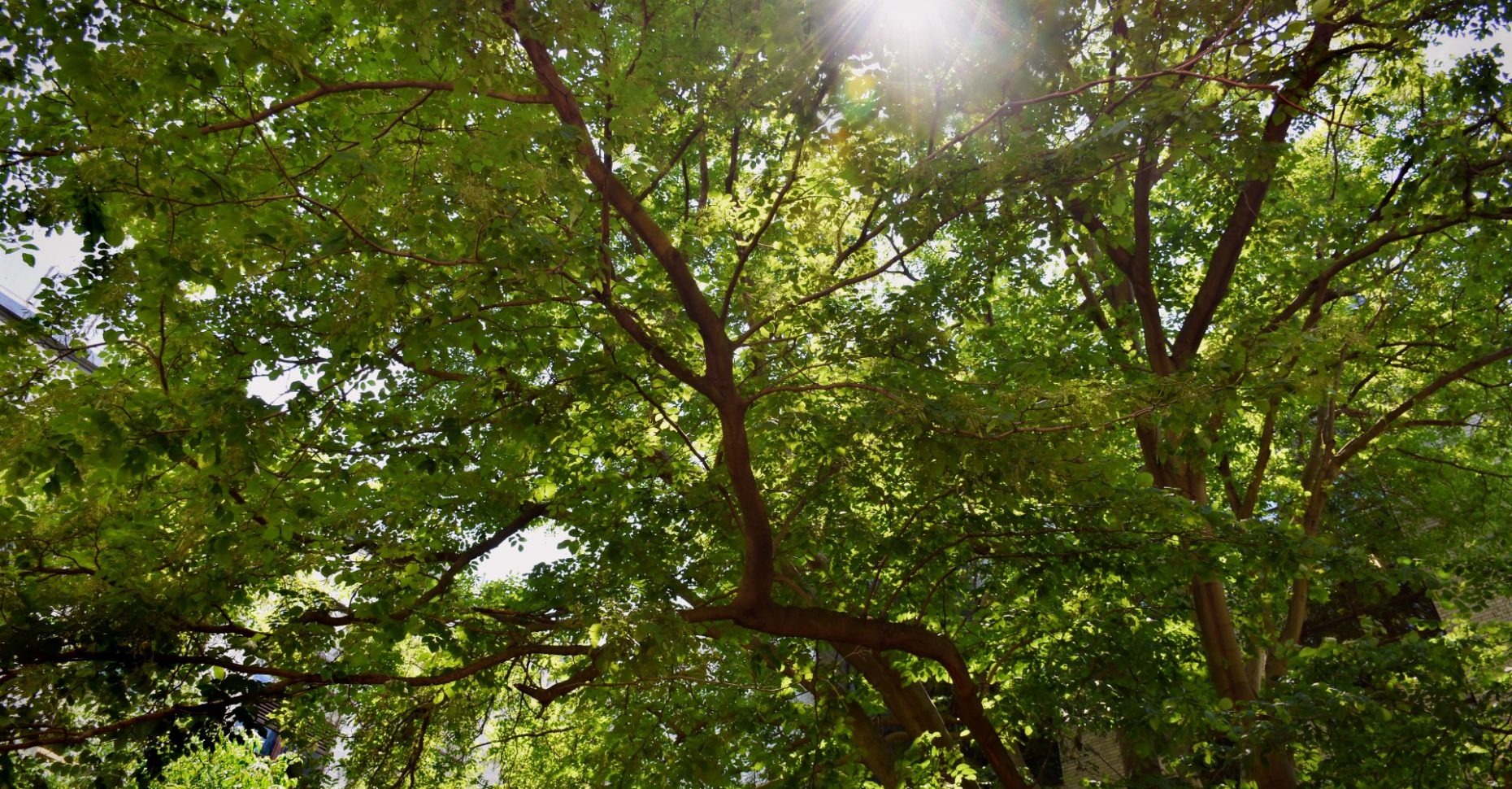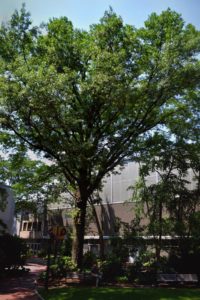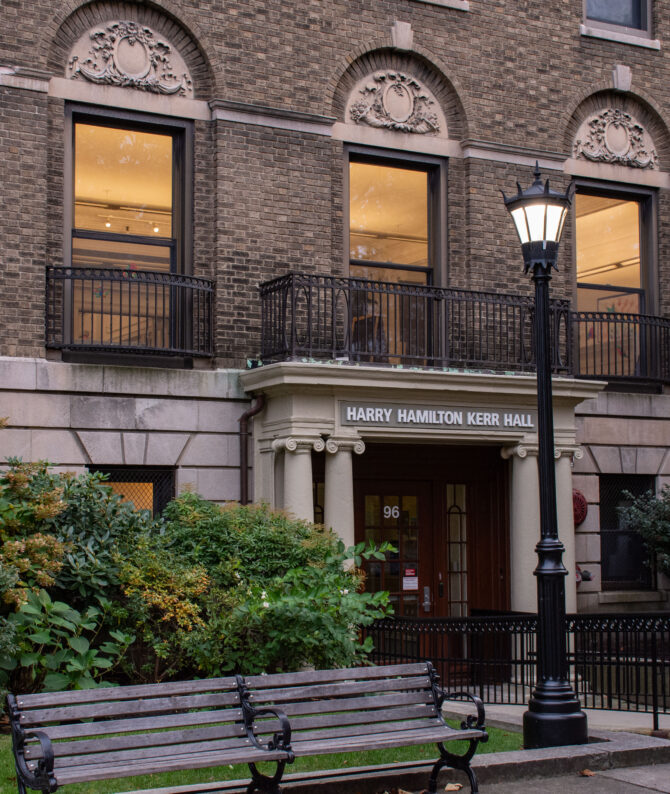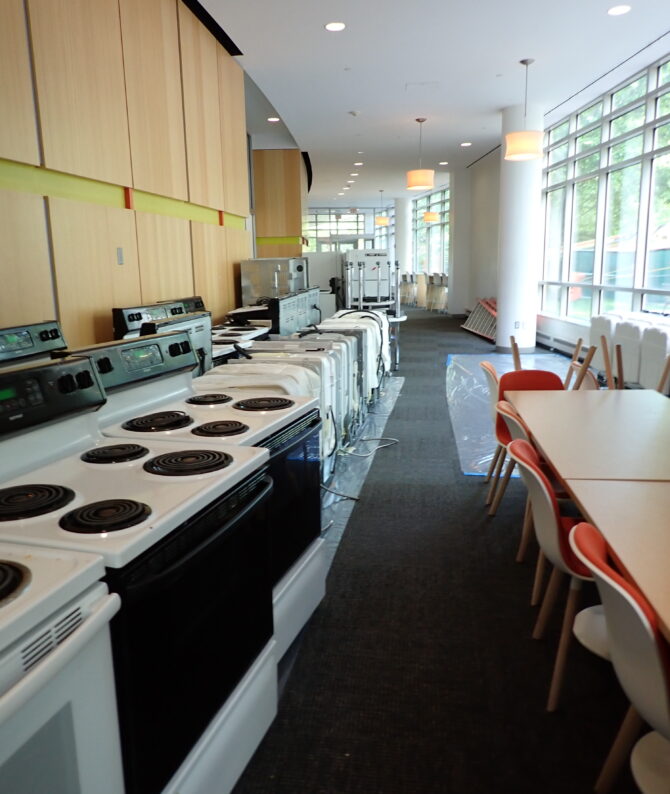Established Trees – Problems and Preservation

More than fourteen hundred trees and more than five thousand shrubs are scattered across roughly twelve acres of arboretum greenspace throughout Northeastern University’s Boston Campus. These plants are vital contributors to our urban forest and create the gorgeous scenery that one can enjoy when walking through the campus. However, some uncertainties and potential threats are looming over not yet fully established plants jeopardizing their growth and development.
Mature trees provide more benefits than just aesthetic value. They are natural air purifiers that help mitigate climate change and reduce heat island effects by cooling down streets and buildings. These are just a few of the many benefits provided by large, established trees.
 |
More than 60% of the plants on our Level II Arboretum are at or reaching maturity, while the vast majority of the remaining 40% are well established. Some of the largest and most prominent trees on campus are two American Lindens (Tillia americana) which tower over the Krentzman quadrangle, a tall Pin Oak (Quercus palustris) growing in Churchill Quadrangle, and, of course, a Yellowwood (Cladrastis kentuckea) tree almost covering the entire backside of Mugar Life Sciences building with its lush canopy. It takes a great deal of time, effort, and resources to maintain these mature trees. |
| Pin Oak (Quercus palustris) |
| Unfortunately, besides natural threats such as soil degradation, pests, and weather conditions, there is also unavoidable campus upkeep. Underground utility maintenance and upgrades require excavation. These construction projects can damage tree root systems or even require the complete removal of these majestic trees. Steve Schneider, Director of Horticulture and Grounds at Northeastern, is working to mitigate those threats to preserve green spaces and retain its unique ecosystem by ensuring proper environmental management, including watering techniques, soil revitalization, and integrative methods of pest management. Larger preservation initiatives such as environmentally inclusive construction planning standards and a rigorous inventory management system to track each tree and shrub on campus are in the works. Still, sometimes the most productive approach is as simple as communication. |  American Linden (Tillia americana) American Linden (Tillia americana) |
In addition to that, Northeastern recently completed a mapping survey of its underground utilities. Steve distinguished this survey as a critical component to a proactive planting that will be utilized for planting future trees. Such an approach will potentially alleviate the displacement of large specimen plantings that might otherwise have found themselves placed over a steam line.
For people interested in taking their at-home tree-care game up a notch, Steve suggests that homeowners set aside a “tree investment fund.” That fund could be used to hire professionals to assess and take care of large trees on their property. It is crucial to know what is happening with the tree before deciding to cut that annoying branch off that keeps hitting a side of the house on a windy day. Tree work done well is not inexpensive but preserving your established canopy is more valuable than you think.
| You got questions – We got answers |
| Q: Wouldn’t it be easier to cut the tree or just move it and replant it somewhere else?
A: The short answer is no. Even if they are small enough to be moved, established trees can have a hard time adapting to new environments, and there is no guarantee whether they will take to the new location.
Q: Would planting a young tree compensate for the loss of an established one? A: While it might seem that replanting three or four trees could offset the loss of a single, large specimen, in reality, it will only offset a small fraction of the value that an established tree provides. It takes an incredible amount of time and resources (at times a little luck) for a newly planted tree to grow into its established size.
Q: Could we replant the same size tree to get the same canopy right away? A: Unfortunately, if a tree can’t be saved, including the vast majority of its root system, it’s better to replace it with an adequately sited, juvenile tree that can grow and adapt into space. Plant smaller, more adaptable trees for future generations and avoid notions of instant gratification. |
Written by Alex Gritsinin – July 19th, 2021
Photos by Russell Zingler / Office of Sustainability



